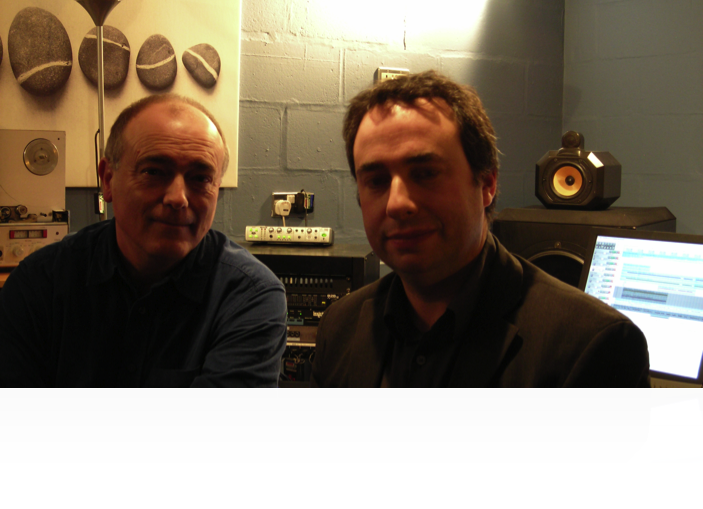
Behind the scenes
In session
Origins
Being Dufay has its origins in a piece I was commissioned to write for a music festival in Vigevano, Italy. After researching the history of the town, it became clear that this was a place where the present and the past are both alive at the same time in an unusual synthesis. I wondered about how this might work musically. I neither wanted to make an adaptation of the past, nor did I want to ‘update it’. This project aims to bring together music which is centuries old and some of today’s newest composition techniques.
Digital Models
Much like in the movies, where non-existent buildings and virtual people often indistinguishable from the real thing regularly grace high budget productions, similar but more modest technology permits some interesting creative results in the musical world. I wanted to be able to create alternative versions of John Potter’s voice in Being Dufay, not simply to present more than one of him, but to seemingly do the impossible! I needed to use backing choirs and female vocalists for some tracks, however, I also wanted every individual singer in those choirs to have some link to the character of John’s voice. As this is clearly something that is difficult to achieve in nature, I set about building a digital model. My aim is to avoid using technology to do what a human can do better, so the digital model is used sparingly to create textures and effects for the composition which can not be done in any other way – it never replaces the main vocal.
I searched my source recordings looking for musical gestures which I wanted to be able to re-shape. In addition to providing mass choirs of independent singers, on several occasions on the record, John’s voice becomes ‘morphed’ into other textures: three quarters of the way through Je Vous Pri, John becomes a superb bass-clarinet sound! In Sanctus, a digital counterpart to the main vocal line is created over an extended pitch range, yet sounds perfectly plausible as a human.
Analog and old technologies
Surrounding the high tech vocal reconstructions are a number of extremely low-tech, straightforwards synthesiser parts. I love the sound of old synthesisers: on this release I’m playing the vcs-3, the sequential Pro 1, and the Yamaha tx812 (bass) and various Roland synths from the 1980s.
High resolution, uncompromised recording
The recordings on Being Dufay were made to the highest technical standards, both digital and alaog. 24bit,96k digital audio, with double-precsion audio processing was used throughout the work on the electronic parts. The CD was mixed analog, live at the board – a wonderful sounding 90 channel Harrison at Rainbow Studio, Oslo - without any automation or computer assistance! The CD release of the album retains the full dynamics and resolution of the analog mix: it has not been ‘limited’ or ‘compressed’ as so many releases are today.
Ambrose Field
Image copyright 2009 (c) Penelope Walbourn
Being Dufay was realized at the composer’s facility, York
The album is produced by Manfred Eicher, and mixed by Manfred Eicher, Ambrose Field and Jan Erik Kongshaug
Here: John and Ambrose at the University of York Department of Music